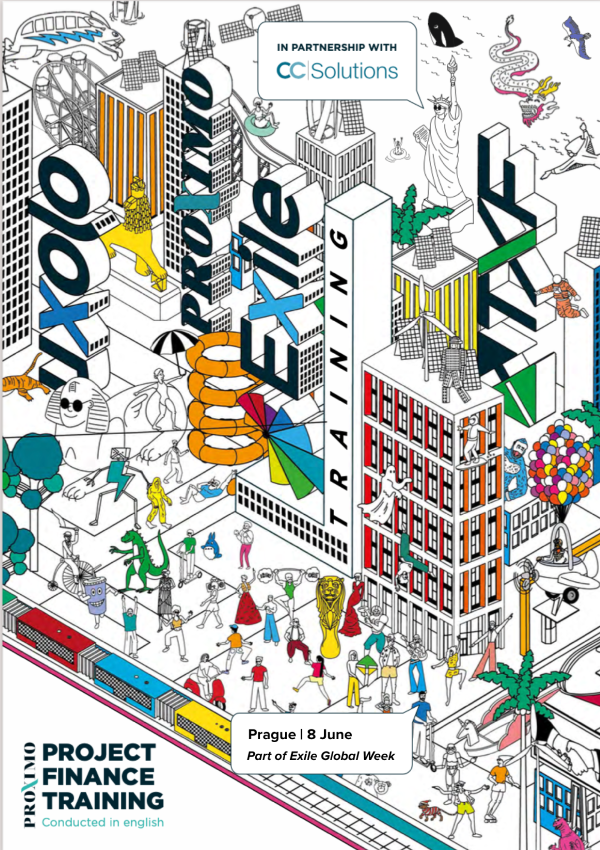US FTTH project finance begins to deliver
With heavyweight corporate credits like AT&T and BlackRock adopting limited and non-recourse borrowing for US FTTH projects, the US market looks set to finally deliver on its longstanding project finance promise.

Limited and non-recourse financings for FTTH assets in the US remain comparatively rare, but recent deals such as the financing for AT&T and BlackRock’s Gigapower joint venture – which will look to roll out fibre in Tier 2 cities across the US – may signal the start of a much stronger deal pipeline.
The financing, signed in May, comprises a $1.64 billion five-year term loan and a $15 million seven-year revolving credit facility provided by Societe Generale, BNP Paribas, Credit Agricole, ING Capital, Intesa Sanpaolo, JP Morgan Chase, MUFG, NatWest and Standard Chartered. The fibre network will become open access following an exclusivity period, during which AT&T will be the network's ISP. The roll-out will include regions such as Las Vegas, Mesa, the Chandler and Gilbert areas of Arizona, parts of Northeastern Pennsylvania (including Wilkes-Barre and Scranton), and parts of Alabama and Florida that are outside AT&T’s current service areas.
A retail syndication for the Gigapower transaction is due to take place over the summer. The Gigapower deal will be one of the largest project financings for FTTH in the US to date. It is still small in comparison to many European deals – Open Fibre, for example, raised €7.2 billion ($7.9 billion) in 2022 – but is very large in the context of the US fibre market.
There are several reasons behind the scarcity of US FTTH project financings. The prevalence of cable internet in the US has made the switch to fibre less imperative than in many European countries, where old-fashioned copper telephone lines are more common. Even in countries such as the UK that have widespread fibre-to-the-cabinet (FTTC) coverage, the ‘last mile’ of this coverage is often copper.
As a hybrid fibre-coaxial network, cable offers significantly higher speeds than networks that include copper. The immense difference in speed between DSL and fibre has made the business case for FTTH much clearer in many European countries than in the US. While fibre is faster than cable, US consumers have a less pressing need to switch to fibre due to relatively high cable internet speeds. This more complex business case has led to the roll-out of fibre in the US being slower than might be expected. Estimates of US fibre coverage vary significantly, but according to a 2022 study by the Fiber Broadband Association (FBA), around 43% of US households have access to fibre. Fewer fibre projects has meant less demand for project financings.
It is also possible that deal flow for non-recourse financings has been slow because of the purely market-driven approach adopted by the majority of states in the US. This fibre strategy is not dissimilar to the UK’s fibre policy, which allows developers to compete to build fibre in most areas without any formal concessioning structure of the sort used in markets like France. Lenders are exposed to full volume risk, making a track record of fibre development and strong equity investment important to a project financing. To establish such a track record, many developers have relied on equity investment and corporate financings to roll out fibre in recent years.
Additionally, when the pace of fibre development was slower, large telecoms companies such as AT&T, Verizon, or T-Mobile have been able to fund some development by borrowing against their balance sheets. Asset-backed securitisations – such as Ting’s recent $239 million offering to support its US fibre roll-out – are also not uncommon. Federal stimulus under the Biden administration and demand for ultra-fast internet following the Covid-19 pandemic have increased the speed of fibre deployment, pushing fibre developers to look at project finance as a means of raising capital.
The rationale behind fibre project financings
At first glance, the use of project finance for US fibre transactions may seem strange, at least in some instances. For example, why should large corporate players that can borrow cheaply against their balance sheets go through the rigmarole of raising limited recourse debt? The answer lies in the sheer demand for capital in FTTH investment and in how investment in fibre network expansion on corporate balance sheets will be viewed by rating agencies and public equity analysts.
Discussing this, Richard Knowlton, a managing director and head of TMT finance for the Americas at Societe Generale, says: “Large public telecoms companies like AT&T have to balance allocation of free cashflow between servicing debt to maintain public ratings, deploying capital to share buyback and dividends to satisfy public equity analysts, upgrading their wireless and fixed-line networks, and deploying capital to their large enterprise plans and residential fibre.
“There is far more demand for capital for FTTH than they can reasonably meet through their corporate balance sheets in any given year. With that, the solution is to obtain access to a shared network without directly owning the network or financing via the corporate balance sheet. Limited recourse project finance can provide this solution, although raising debt for fibre via a project company is a more recent trend in the US.”
As Knowlton suggests, corporate cashflows are pulled in multiple directions and even larger players may struggle to accommodate the entirety of their investment in fibre on their balance sheets. Less than half of US households currently have fibre and federal grant funding for high-speed internet alone includes $65 billion from the Bipartisan Infrastructure Law and over $25 billion from the American Rescue Plan. The US is geographically vast, demand for fibre is rising, and the roll-out of fibre is being actively stimulated by the federal government. Corporate balance sheets will only stretch so far without compromising ratings, particularly in light of the enormous capex requirements of achieving widespread US fibre coverage.
In the case of the Gigapower project financing, AT&T avoided having to account for over $1.6 billion of corporate debt and secured a share of the equity for the project from BlackRock, helping with cashflow allocation. AT&T cannot raise its corporate leverage beyond a certain level without affecting ratings, whereas it is entirely possible to have a highly leveraged project company for a fibre roll-out as long as lenders are prepared to back the financing. The non-recourse approach also protects AT&T’s balance sheet in the event of a default.
For smaller developers, limited recourse financings can be crucial, as these companies are often dedicated fibre developers without cashflow from elsewhere. In the early stages of fibre expansion, start-ups are often not cashflow positive, making a corporate financing less viable. By using equity investment to begin a fibre roll-out and demonstrate a track record to lenders, smaller players can raise project finance debt on the basis of future cashflows from the fibre assets. This leverage is, crucially, non-dilutive capital that prevents start-ups from continually carving off pieces of the company to outside investors to gain the capital needed for expansion.
One such example is IQ Fiber, which has around $200 million of equity committed after a recent $150 million investment from SDC Capital Partners. The Florida-based FTTH developer will use the capital raised to expand its fibre network. The company is currently working towards its phase one target of reaching 60,000 serviceable homes across metro Jacksonville and four counties in Northeast Florida. This equity raise is the second investment in IQ Fiber from SDC Capital Partners, which is a founding investor in the company. The company has also raised non-recourse debt since its establishment in 2021.
The risks of a market-driven approach
The US has no fixed system of procuring or deploying fibre at a federal level. There are, of course, subsidy programmes from the federal government, but the regulation of how fibre is installed is largely determined at a state level. Due to the market-driven strategy adopted by many states, this often involves licencing and permits rather than a tender process.
Describing the regulation of US fibre, Ted Schremp, founder, president, and CEO of IQ Fiber, says: “Internet at the federal level is unregulated. The authority to approach local municipalities and cities to develop fibre typically comes from the state level. In Florida and many other states, there are two options for fibre developers. One is to be a CLEC, which is a regulatory regime originally created for phone companies. There is also the option to leverage a state-wide cable franchise, which is a licence that declares you a cable operator, even when the developer in question is using fibre technology.
“We operate under a state-wide cable franchise and have authority from the state to go to local municipalities and seek construction permits. While many states have a state-wide cable franchise, some, like Pennsylvania, don’t. In that case, fibre developers have to go and deal with individual municipalities. Each state has its own regulation for CLECs and cable franchising.”
US states’ array of permitting methodologies does make the US, to some extent, fifty different markets for fibre. This variation is common to many infrastructure sectors in the US and will be familiar to market participants, but due diligence for multi-state roll-outs will still need to account for multiple permitting regimes and developers’ ability to navigate them. The assumptions of developers and lenders about construction timelines and penetration rates may need to be adjusted for different states.
Of greater concern is overbuild risk, which is always particularly acute in fibre markets with no concession system. Especially given that there is currently no requirement for developers to make their networks open access, there is little to stop rival developers building in the same area, eroding each other’s revenue bases. It is notable that project financings for fibre in the US are mostly targeting Tier 2 cities, which are less densely populated than larger cities, reducing demand from other developers and lessening the risk of overbuilding. Effective due diligence will require extensive analysis of the competitor landscape in any given area.
The consequences of a highly competitive, lightly regulated fibre sector are being felt in comparable markets such as the UK. Syndications like that of the £4.9 billion ($6.2 billion) CityFibre financing have dragged on for months, with lenders raising concerns about the penetration rate of the roll-out. This is not to say that there is not appetite for UK fibre financings from lenders, but overbuild risk continues to loom over the sector given the sheer number of developers competing for market share.
Similar risks will likely apply to US fibre financings as the quantum of deals increases. As is common, urban/suburban areas will be most affected by overbuilding. Rural areas will often be reliant on subsidy schemes such as the $42 billion Broadband Equity, Access and Deployment (BEAD) programme to meet the capex needs of a rural build-out, limiting demand for multiple roll-outs. Unlike UK developers, US developers must also compete with strong incumbent cable operators like Comcast that already offer fast interest, adding another dimension to volume risk.
As Timo Hellwig, a director at KfW IPEX-Bank, notes: “Many of the risks for lenders attached to financing a US fibre deal are the same as those of a European deal, but the substance of those risks is different. In terms of competition, the main competitor to fibre in the US is cable, which has about 97-98% coverage. This influences how lenders view potential revenue from fibre networks, because there is strong competition from other players. This should be reflected in lenders’ financial models with lower penetration assumptions than you would see in Europe.”
The Proximo perspective
The tide is evidently starting to turn in favour of project finance as a means of raising capital for FTTH projects in the US. Corporate financings and pure equity investment will still form part of developers’ arsenals for FTTH development, but project finance could be highly useful due to the scale of the investment required. The Gigapower deal is almost certain to be a benchmark for US fibre transactions, having received the backing of some of the largest lenders in the international project finance market.
Following the European trend, the Gigapower financing is a five-year mini-perm, not a great tenor but short-dated project financings are the norm in the US for most asset classes. In terms of structure, early financings may be somewhat conservative with higher margins and lower gearing to compensate for volume risk. Market sources also confirm that staggered drawdowns linked to customer sign-ups should be the norm for US fibre financings, as in Europe. Lenders with experience of European fibre transactions may have a competitive advantage in the US, given the number of European deals already closed.
Lenders might require that early US FTTH deals have a highly targeted approach to fibre roll-outs, with the financing corresponding to very precise areas where consumer demand is likely to be strong. As Nanda Kamat, a managing director at MUFG, suggests: “The real challenge with fibre deals is always penetration risk. Lenders have to make sure that deals are not over-levered and that there are strong structural protections. It is important for lenders to understand and believe the penetration story.”
Open access networks guard against overbuild risk to a certain extent, as it is very hard to justify building a second fibre network in an area that can already choose between several ISPs. Short exclusivity periods for an ISP can also motivate the anchor ISP to sign up as many customers as possible before the exclusivity window ends, while still mitigating overbuild risk if not eliminating it.
Volume risk remains inevitable, particularly in light of cable internet coverage. If fibre providers have to undercut cable providers radically on price and contract length, this will reduce equity returns and feasible leverage while deepening volume risk. Banks are clearly becoming comfortable with this risk and if fibre does offer competitively priced, faster internet, then the rate of churn for fibre networks is likely to be low. But it remains to be seen if penetration rates will truly be strong enough to make project finance the mainstay of FTTH financings in the US.





